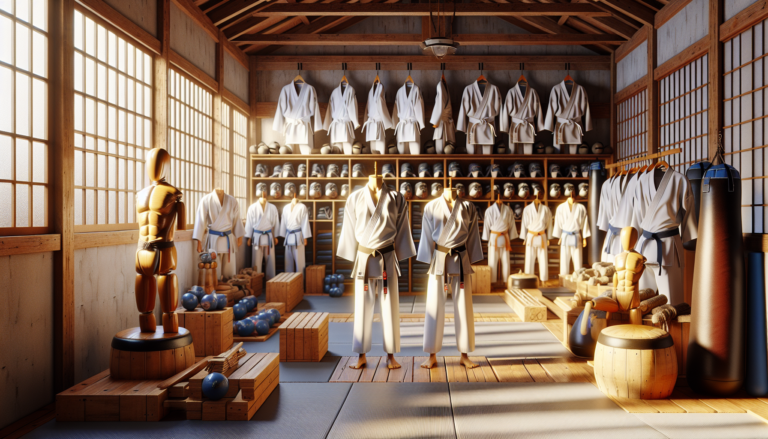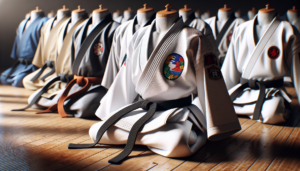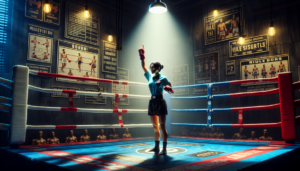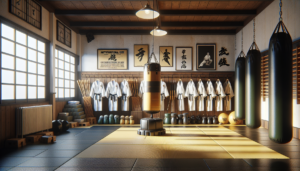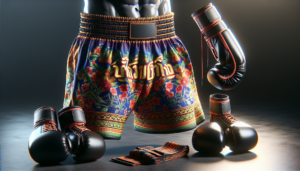Introduction to Karate and Its Misconceptions
Karate, a discipline originating from the island of Okinawa, Japan, is often misunderstood as simply a martial art. However, this classification fails to capture the multifaceted nature of karate, which encompasses not only physical techniques but also philosophical principles, cultural influences, and personal development aspects. To truly understand karate, it is essential to look beyond the common misconceptions and explore its rich history, diverse applications, and holistic benefits.
Common Misconceptions About Karate
One of the most prevalent misconceptions about karate is that it is primarily a combat-focused martial art. While karate does teach self-defense techniques, its scope extends far beyond mere fighting. Many people also view karate as a static and outdated practice, failing to recognize its continuous evolution and adaptation to modern needs. These misconceptions often overshadow the deeper philosophical and personal growth aspects of karate.
The Evolution of Karate
Karate has undergone significant changes since its early development in Okinawa. Influenced by both local Okinawan martial arts known as “te” and Chinese martial arts, karate has evolved into a unique discipline that combines physical techniques with mental and spiritual training. Over time, karate has adapted to incorporate elements from Japanese traditions and has spread globally, leading to the development of various styles and schools.
Karate as a Self-Defense System
While karate is not solely focused on combat, it does provide practitioners with effective self-defense skills. The techniques taught in karate are designed to protect oneself in real-life situations, emphasizing practicality and efficiency.
Techniques and Strategies for Self-Defense
Karate training encompasses a wide range of techniques, including striking, kicking, blocking, and grappling. Practitioners learn to deliver powerful and precise blows using various parts of the body, such as the fists, elbows, knees, and feet. Defensive moves, such as blocking, parrying, and evasive footwork, are equally important in karate, allowing practitioners to protect themselves from attacks.
Practical Applications in Real-Life Situations
The self-defense techniques learned in karate are not limited to the training hall. Practitioners develop situational awareness, confidence, and the ability to assess and respond to potential threats. Karate training also emphasizes de-escalation and conflict avoidance whenever possible, teaching practitioners to use physical techniques only as a last resort.
Philosophical Principles of Karate
Beyond the physical aspects, karate is deeply rooted in philosophical principles that guide practitioners’ personal development and character growth. These principles shape the practice of karate and contribute to its holistic approach.
Balance, Respect, and Perseverance
Karate places great emphasis on balance, not only in terms of physical techniques but also in life. Practitioners learn to find harmony between mind, body, and spirit, cultivating a sense of inner peace and stability. Respect is another core value in karate, extending to oneself, training partners, instructors, and the wider community. Perseverance is essential in karate, as practitioners are taught to push past their limits, overcome challenges, and develop resilience.
Spiritual Growth and Personal Development
Karate training provides a path for spiritual growth and self-discovery. Through rigorous practice and self-reflection, practitioners develop a deeper understanding of themselves and their place in the world. Karate cultivates discipline, humility, and mental fortitude, enabling practitioners to face life’s challenges with greater clarity and strength.
Karate as a Competitive Sport
In recent years, karate has gained recognition as a competitive sport, showcasing the skill and dedication of practitioners on a global stage. The inclusion of karate in the Olympic Games has further elevated its status and popularity.
Karate in the Olympics
Karate made its Olympic debut at the 2020 Tokyo Games, featuring two events: kata (forms) and kumite (sparring). The inclusion of karate in the Olympics has brought increased visibility and legitimacy to the sport, attracting a new generation of practitioners and enthusiasts.
Skill and Character Development
Competitive karate provides a platform for practitioners to test their skills, strengthen their character, and strive for excellence. Through rigorous training and competition, karate athletes develop discipline, mental resilience, and sportsmanship. The competitive aspect of karate encourages continuous improvement and pushes practitioners to reach their full potential.
Cultural Influences on Karate
Karate’s development has been shaped by various cultural influences, reflecting the historical context and traditions of its birthplace, Okinawa. Understanding these influences provides a deeper appreciation for the art and its evolution.
Historical Context and Development
Karate originated in the Ryukyu Kingdom, a medieval kingdom that encompassed the islands of Okinawa. The kingdom’s strategic location facilitated cultural exchanges between Okinawa and neighboring countries, particularly China and Taiwan. These exchanges heavily influenced the development of martial arts in Okinawa, with Chinese martial arts contributing significantly to the techniques and philosophies that would later shape karate.
Adaptations from Japanese Traditions
As Okinawa came under Japanese rule in the late 19th century, karate began to incorporate elements from Japanese martial arts traditions. The adoption of the belt ranking system, influenced by both Okinawan and Western traditions, became a prominent feature in karate. The aesthetics and rituals associated with Japanese martial arts also found their way into karate practice, further shaping its identity.
Karate as a Comprehensive Fitness Regimen
Beyond its self-defense and philosophical aspects, karate offers a comprehensive fitness regimen that promotes physical health and mental well-being. The rigorous training involved in karate practice provides numerous benefits for practitioners of all ages and fitness levels.
Physical Health Benefits
Karate training is a full-body workout that enhances strength, flexibility, coordination, and cardiovascular endurance. The dynamic movements and techniques in karate engage multiple muscle groups, leading to improved overall physical fitness. Regular karate practice can help with weight management, bone density, and the prevention of chronic diseases.
Mental Well-Being and Discipline
The mental benefits of karate are equally significant. The discipline and focus required in karate training help to develop concentration, mental clarity, and emotional balance. Karate practice provides a healthy outlet for stress relief and promotes a sense of inner calm and self-control. The structured nature of karate training also instills discipline and helps practitioners develop strong work ethics and goal-setting skills.
Conclusion: The Multifaceted Nature of Karate
Karate is a complex and multifaceted discipline that extends far beyond the narrow classification of a martial art. Its rich history, philosophical principles, cultural influences, and holistic benefits make it a unique and valuable practice for individuals seeking personal growth and development.
Summary of Key Points
Throughout this article, we have explored the various aspects of karate, challenging the common misconception that it is solely a martial art. We have delved into karate’s origins in Okinawa, its evolution and adaptations over time, and its effectiveness as a self-defense system. We have also examined the philosophical principles that guide karate practice, its recognition as a competitive sport, and its comprehensive fitness benefits.
Final Thoughts on Karate’s Classification
To truly appreciate karate, it is essential to recognize its multidimensional nature. While karate does encompass martial art techniques, it is more accurately described as a holistic discipline that integrates physical training, self-defense, character development, and philosophical principles. By embracing the diverse aspects of karate, practitioners can experience its transformative power and unlock their full potential, both on and off the training floor.

